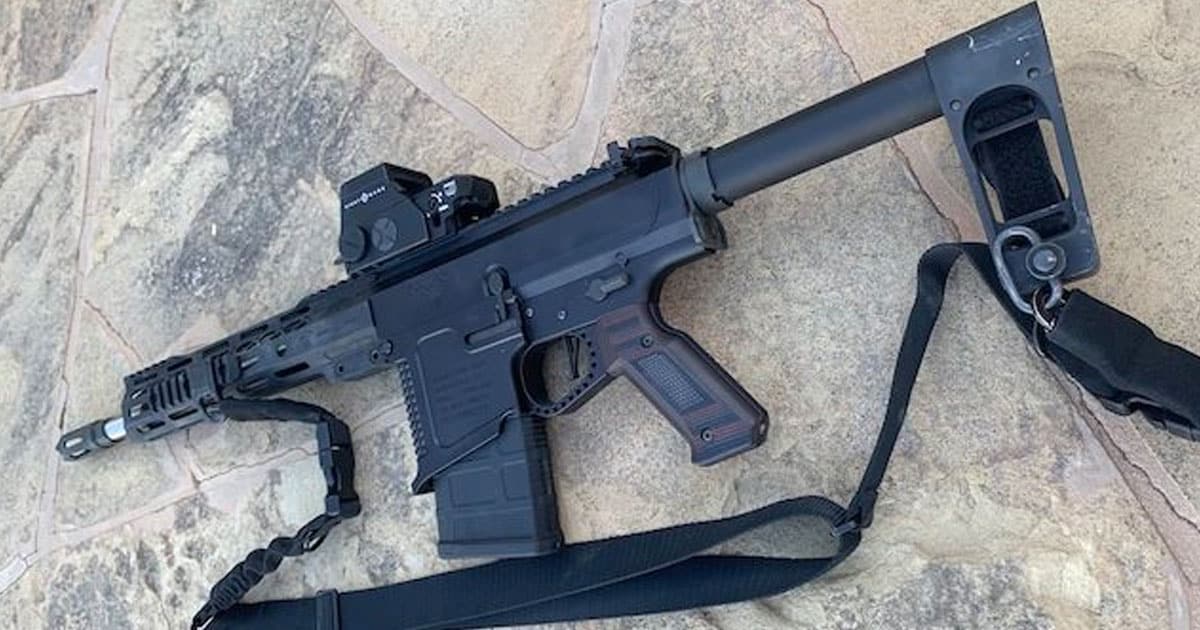
On Wednesday, District Judge Drew B. Tipton issued a preliminary injunction against enforcement of the rule. He decided for the plaintiffs, which included the State of Texas, Gun Owners of America (GOA), the Gun Owners Foundation, and Brady Brown.
The injunction is limited to the plaintiffs in the current case.
GOA’s Erich Pratt celebrated the judicial victory on behalf of the Second Amendment organization’s members.
“We are incredibly grateful to Judge Tipton for hearing the pleas of our members who are facing serious prosecution simply for owning a piece of plastic — all because of an arbitrary reclassification by the ATF. GOA and our millions of members nationwide will continue to fight back against this rogue anti-gun administration at every turn in defense of our rights.”
Stabilizer pistol braces were initially developed to assist wounded veterans to continue to enjoy sport shooting despite physical limitations. However, the ATF on Jan. 31 published its new pistol brace rule in the federal registry.
The agency in effect created a new law that gave lawful gun owners 120 days to comply. These citizens faced five options.
They could hand over the firearm with the stabilizing brace attached to the ATF. They could choose to destroy the entire firearm. The weapon now defined as a short-barreled rifle (SBR) could be converted to a long-barreled rifle. The owner could apply to register the weapon under the National Firearms Act of 1934 or permanently alter or destroy the brace so that it may not be reattached.
Gun rights enthusiasts argued in Texas v. ATF that the broad change is in effect a new law governing firearms across the nation. As such, it is a violation of the Administrative Procedures Act by taking on legislative powers that are constitutionally limited to Congress.
Plaintiffs asked for a preliminary injunction to block the agency from enforcing the Final Rule until the case was decided.
Judge Tipton granted the preliminary injunction until the case Mock v. Garland is resolved. This is a Fifth Circuit legal challenge to the ATF’s pistol brace rule.
The Mock case is another in the same circuit that was brought by the Firearms Policy Coalition.
The third case that resulted in a preliminary injunction against the ATF’s new rule was SAF v. ATF. The latest statement from the court came on the heels of a request for a clarification of the agency regulation by the Second Amendment Foundation (SAF).
The group issued a statement noting U.S. District Judge Jane J. Boyle clarified her prior ruling of a preliminary injunction on the administration’s new “arm brace rule.” The group noted Boyle declared that her decision applied to the SAF and its members, which constituted another victory for gun rights.
Momentum in the courts is clearly on the side of those who stand by Second Amendment rights and against the arbitrary actions of the ATF. Its decision earlier this year to reclassify pistol stabilizer braces as SBRs carried the potential of making felons out of millions of otherwise law-abiding citizens.
Of course, gun rights advocates rose in unison and struck back against the onerous overreach by Washington. It is rewarding to see the fruits of their labors coming back positive time and again.
The ATF swerved far out of its lane in its attempt to rewrite federal law and bring about sweeping changes. This is the power the Founding Fathers granted to Congress, and until Congress says that pistol stabilizer braces are illegal, this rule should be permanently struck down.
